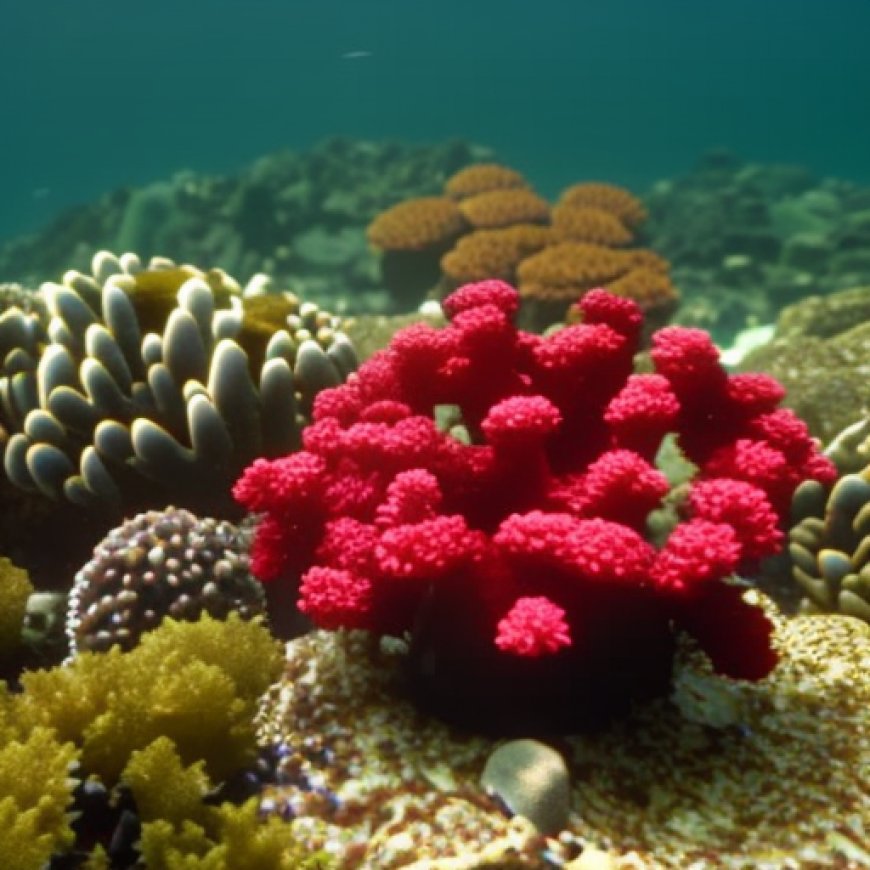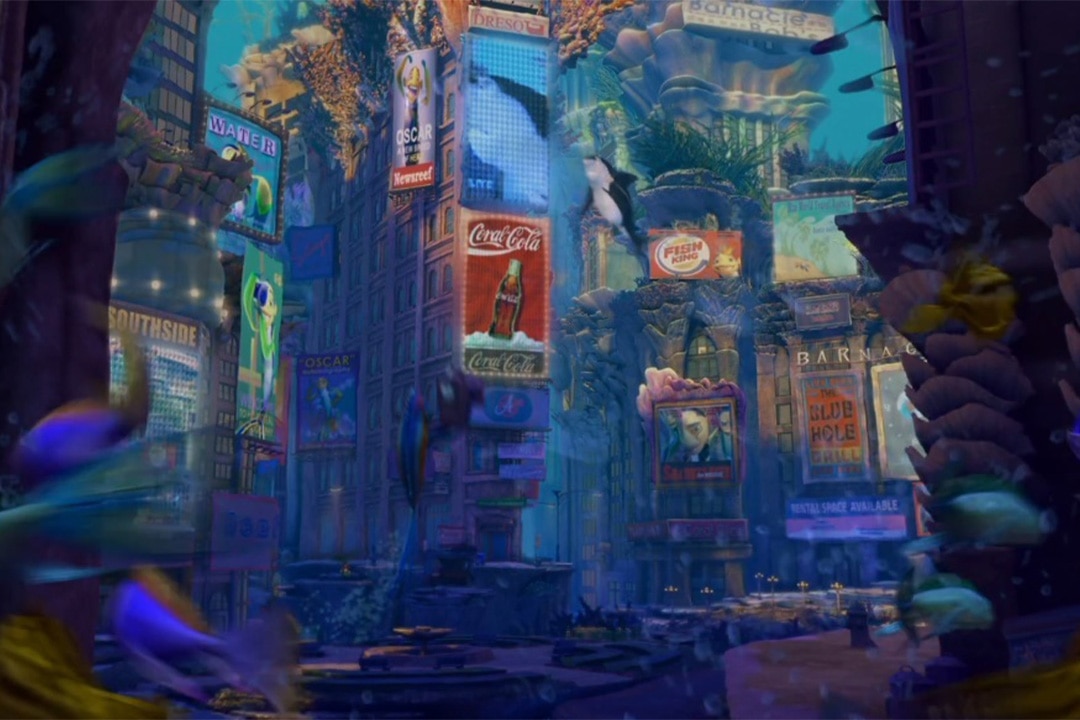Good News! Some Corals Show Remarkable Resilience to Climate Change
Good News! Some Corals Show Remarkable Resilience to Climate Change Syfy


The Importance of Coral Reefs in Achieving the Sustainable Development Goals

Introduction
The 2004 animated comedy Shark Tale (streaming now on Peacock) tells a sordid (but family friendly) tale of organized crime in the deeps of the sea. It takes place at Southside Reef, a bustling underwater community filled with every manner of sea creature. And that makes sense, if you’re going to have a character-based underwater story, it almost has to be at a reef where about a quarter of all ocean life resides.
Sadly, reef ecosystems are also some of the most vulnerable to global climate change. Over the last several decades, average sea surface temperatures have risen at a fairly consistent rate, thanks to humanity’s introduction of excess greenhouse gas emissions. We think a lot about how a warming planet will melt the ice caps and cause sea levels to rise, but warmer waters are dangerous for ocean life even if they’re not rising. Fortunately, a recent study published in the journal Nature Communications demonstrates that some corals are learning to adapt to a warming world.
What’s the Deal with Coral Bleaching?
Corals are animals, but they behave a lot like plants. They are largely static, mounting themselves to the existing reef and adding themselves to it. Some of them actively hunt prey that happens to come too close, but many rely on symbiotic algae. The corals provide a safe haven for algae, inside their bodies, and the algae in turn feeds the coral with excess sugars produced through photosynthesis. The coral and the algae live in perfect balance, each one responsible for the survival of the other.
Impact on Sustainable Development Goals
- SDG 14: Life Below Water – Coral reefs play a crucial role in supporting marine biodiversity and providing habitats for numerous species. The adaptation of corals to rising temperatures contributes to the preservation of marine ecosystems and helps achieve SDG 14.
- SDG 13: Climate Action – The study’s findings highlight the potential for natural adaptation to climate change. By reducing greenhouse gas emissions and taking measures to protect coral reefs, we can support the resilience of these ecosystems and contribute to SDG 13.
- SDG 15: Life on Land – Coral reefs are interconnected with terrestrial ecosystems and contribute to the overall health of the planet. Protecting coral reefs aligns with SDG 15, which aims to conserve and restore terrestrial ecosystems.
Some Reefs Have Increased Their Resistance to Heat
The recent study was led by Liam Lachs, a PhD candidate in Climate Change Ecology and Evolution at Newcastle University, and an international team of colleagues. Together, they studied reefs near the island nation of Palau in the western Pacific.
The area was chosen because it experienced marine heatwaves in 1998, 2010, and 2017, each with their own associated bleaching events. However, researchers noticed that bleaching decreased from one heat wave to the next, and they observed similar phenomena in Australia, Asia, and elsewhere. Next, they gathered 35 years of data on sea surface temperatures and coral bleaching events and plugged that into a simulation.
Their model showed an increase in thermal tolerance of roughly 0.1 degrees Celsius, per decade. Global sea surface temperatures are increasing at an average rate of 0.18 degrees Celsius per decade, so the corals are lagging behind, but they are getting better at dealing with a warming world. Researchers aren’t totally clear on the mechanisms at work, but they’ve got a few ideas.
Potential Implications for Sustainable Development
- Conservation Efforts – The adaptation of corals to rising temperatures provides hope for the preservation of coral reefs and the ecosystems they support. This highlights the importance of conservation efforts in achieving SDG 14 and protecting marine biodiversity.
- Climate Change Mitigation – The study’s findings emphasize the need for global efforts to reduce greenhouse gas emissions and address climate change. By taking action to mitigate climate change, we can support the resilience of coral reefs and contribute to SDG 13.
- Ecosystem Resilience – The ability of coral reefs to adapt to warming temperatures demonstrates the resilience of natural ecosystems. By protecting and restoring these ecosystems, we can enhance their ability to withstand environmental changes and contribute to SDG 15.
Whatever the reason, the upshot is fewer corals dying from bleaching than previously predicted. Researchers estimate that if heat tolerance continues to increase at this rate, corals might save themselves from a significant amount of die off, no thanks to us.
That said, the adaptation of reef ecosystems demonstrates that there really isn’t a “point of no return” when it comes to climate change. There is no moment when we should throw in the towel. Every bit of warming we prevent or delay buys time for nature to do its part. The longer we can hold the line and slow down the advance of anthropogenic climate change, the larger the opportunity for plant and animal species to find new ways to survive.
SDGs, Targets, and Indicators Relevant to the Issues Discussed in the Article
1. Which SDGs are addressed or connected to the issues highlighted in the article?
- SDG 13: Climate Action
- SDG 14: Life Below Water
2. What specific targets under those SDGs can be identified based on the article’s content?
- SDG 13.2: Integrate climate change measures into national policies, strategies, and planning.
- SDG 14.2: Sustainably manage and protect marine and coastal ecosystems to avoid significant adverse impacts.
3. Are there any indicators mentioned or implied in the article that can be used to measure progress towards the identified targets?
- Indicator for SDG 13.2: Existence of national policies, strategies, and plans that integrate climate change measures.
- Indicator for SDG 14.2: Proportion of marine areas protected, including coral reefs, to total marine areas.
Table: SDGs, Targets, and Indicators
| SDGs | Targets | Indicators |
|---|---|---|
| SDG 13: Climate Action | 13.2: Integrate climate change measures into national policies, strategies, and planning. | Existence of national policies, strategies, and plans that integrate climate change measures. |
| SDG 14: Life Below Water | 14.2: Sustainably manage and protect marine and coastal ecosystems to avoid significant adverse impacts. | Proportion of marine areas protected, including coral reefs, to total marine areas. |
The article addresses the issues of coral bleaching and the adaptation of reef ecosystems to a warming world. These issues are connected to SDG 13: Climate Action, which aims to combat climate change and its impacts. The article also discusses the vulnerability of reef ecosystems, highlighting the importance of SDG 14: Life Below Water, which focuses on the conservation and sustainable use of marine resources.
Based on the article’s content, the specific targets that can be identified are SDG 13.2, which calls for the integration of climate change measures into national policies, strategies, and planning, and SDG 14.2, which aims to sustainably manage and protect marine and coastal ecosystems to avoid significant adverse impacts.
The article does not explicitly mention indicators for measuring progress towards these targets. However, for SDG 13.2, an indicator could be the existence of national policies, strategies, and plans that integrate climate change measures. For SDG 14.2, an indicator could be the proportion of marine areas protected, including coral reefs, to total marine areas.
Behold! This splendid article springs forth from the wellspring of knowledge, shaped by a wondrous proprietary AI technology that delved into a vast ocean of data, illuminating the path towards the Sustainable Development Goals. Remember that all rights are reserved by SDG Investors LLC, empowering us to champion progress together.
Source: syfy.com

Join us, as fellow seekers of change, on a transformative journey at https://sdgtalks.ai/welcome, where you can become a member and actively contribute to shaping a brighter future.







